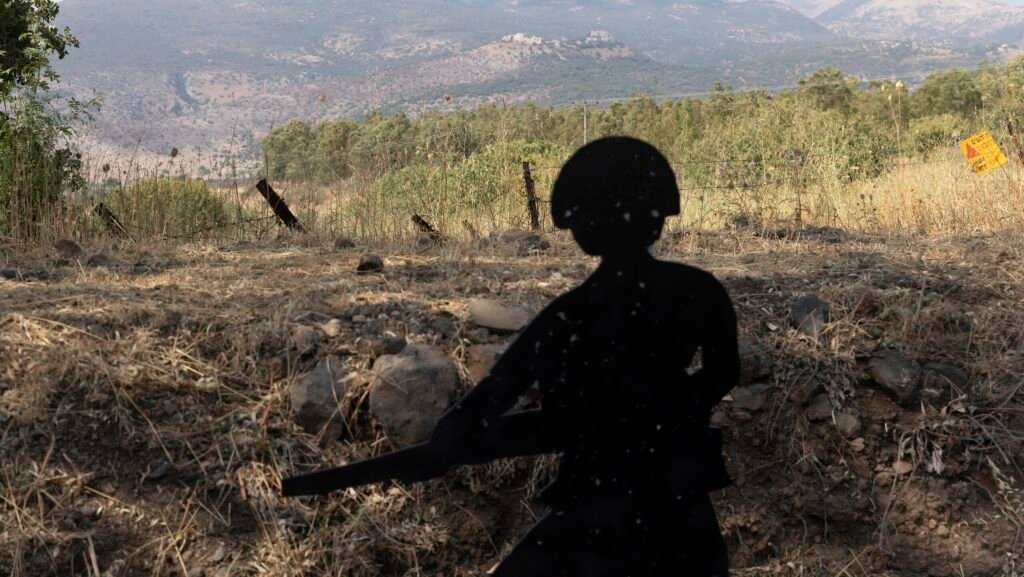When leaders of terrorist organizations speak, their words must be carefully considered. The October 7 plan was made loud and clear in the rants of Iranian proxy leaders. Israel’s defense hierarchy tragically, literally, left the door open to disaster by ignoring the threat from Hezbollah leader Hassan Nasrallah and Iranian proxies such as the Houthis in Yemen. The responsibility of each institution for the resulting horror will be debated and investigated for decades to come.
After eight of the bloodiest months in history, the warring factions have drawn a red line by making a ceasefire in the Gaza Strip a condition for any stability in the region. Ask most residents of Kiryat Shmona, within striking distance of the Lebanese border, if they feel safe to return to their abandoned homes after October 7 and you’ll get the answer.
Israel is strategically reworking its messaging. The phrase “get rid of Hamas” is key to understanding Israel’s position on the ceasefire, and rumors suggest the possibility of Palestinian Authority intervention in Gaza at the end of the war. Touchstones and cracks in the end-of-war messaging may indicate that diplomatic channels are pressuring Israel to end the war.
Hezbollah’s deputy leader, Sheikh Naim Qassem, reiterated in an interview with the Associated Press that “if there is a ceasefire in Gaza, we will stop without any discussions.” Lebanese Foreign Minister Abdullah Bu Habib conveyed the message to his Israeli counterpart, Israel Katz, through his Azerbaijani counterpart, Jayhun Bayramov, that Lebanon does not want war. Katz responded with the message, “We need to let the people return to their homes. If there is no diplomatic solution, there will be war.”
Mediators come in. Traditional allies, such as European countries, persuade and threaten the Jewish state to heed their calls for calm. Meanwhile, the US rallies new friends in the region, such as the United Arab Emirates (a vital relationship), to make their voices heard by promising support for Gaza after the war. All this shows that the international pressure to end the war is continuing.
In addition to the plan, Hamas is also demanding the withdrawal of Israeli troops. The agreement effectively ties Israel’s hands and paves the way for a future October 7 meeting. Even if a tenth of Hamas’ infrastructure remains and its leadership continues to control Gaza, Israel’s future is uncertain.
The recent fighting in Gaza is in keeping with the US aim to prevent a regional war and confront Iran directly. This tactical maneuver could be a barometer of whether Israel will enter a larger war with Hezbollah.
The Iranian-backed proxy has sent a clear message that its goal is to stop the fighting in Gaza, and despite the number of rockets fired at Israel’s northern border since October 8, Tehran does not appear to be seeking to escalate hostilities with Israel.
However, Iran’s mission to the United Nations wrote on June 28 on the X platform, then known as Twitter, warning that “a devastating war would occur” if Israel launched an all-out attack against Hezbollah in Lebanon.
Iran has used its own capabilities and proxies to project military power in the region and exert pressure when it deems it necessary.
These exercises were in part a dress rehearsal (or dry run) to expose Israel’s capabilities to the world and a litmus test to understand Israel’s and the international community’s military and diplomatic response.
An internal dispute over an end-of-war strategy has put Defense Minister Yoav Gallant at odds with Prime Minister Benjamin Netanyahu. Gallant, a key negotiating partner with the US, has sought to calm the situation for fear of a larger conflict and sees the need for an end-of-war strategy. Gallant said over the weekend that a diplomatic solution is preferable to war and that Israel does not want war with Hezbollah. But if the Iran-backed militia decides to escalate, Israel will “know what to do.”
The war, launched by Israel in retaliation for the Oct. 7 incursion on Israel’s southern border, was conceived by Prime Minister Netanyahu with three goals: to destroy Hamas, kill its leadership and free hostages forcibly held in Gaza.
The first goal, one that the IDF chief of staff said is close to being achieved, will likely see the military complete its dismantling of Hamas’ terrorist infrastructure, but it will depend on monitoring the Philadelphia Corridor and clearing all of the tunnels that run from Egypt to Gaza.
The second goal – removing all terrorists from Gaza – appears unattainable, leaving the war-torn region in a state of uncertainty.
As for the hostages, whatever deal is reached with the Iranian-backed proxies can be expected to see all of them released. The fear that some of the hostages will remain as bargaining chips in future negotiations leaves this chapter of a fragile war unfinished, one that has necessitated endless death and destruction, Israeli insecurity, and the rebuilding of a devastated Gaza Strip.
Nasrallah’s demand is for a “complete and permanent ceasefire in Gaza,” but even if an all-out war with Lebanon is avoided, the 150,000 long-range missiles aimed at Israel and the Houthi rebels’ various tactics and drones will not prevent a ceasefire or a diplomatic solution.
For the 80,000 civilians who have not been able to return to their homes since October, the ceasefire has not brought peace or a home.
The clock is ticking and all-out war is looming. Every word and every second counts, and time is running out for a diplomatic solution.

